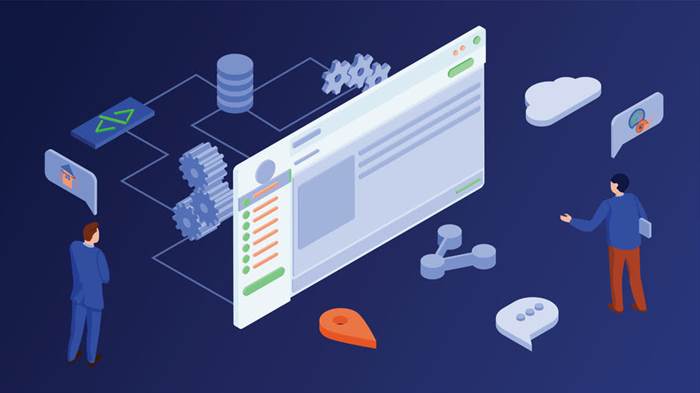Benefits of cloud computing: The pros and cons
Build in flexibility as a matter of strategy when designing applications to ensure portability now and in the future. Make sure you understand the SLA concerning the infrastructure and services you’re going to use and how that will impact your agreements with your customers. Keep ALL your teams up-to-date with cloud security best practices.
The benefits of remote work for companies are so compelling that56 percent of startups outsourcesome of their work. Employees love it too, with57 percent of workersin the computers and IT industry doing some of their work from home. Organizations are also more likely than ever to have employees working in all corners of the map, making the ability to collaborate crucial.
Cloud computing defined
If you’re running backups during working hours when people are heavily using the internet, a large backup to the cloud has the potential to increase congestion and reduce your internet performance. This issue primarily affects small businesses without the resources to invest in the highest internet bandwidth and speeds. However, a good provider will work with you to avoid this issue through scheduling or automation. Cloud computing offers enterprise developers quick access to tools and platforms for building and testing applications, speeding up time to market. When adopting cloud computing architecture, there is no one-size-fits-all.

The main difference between cloud computing and client-server architecture is where the resources are hosted. In client-server architecture, resources are hosted on a single server, while in cloud computing, resources are distributed across a network of servers. One of the main drawbacks is that the server can become overwhelmed if there are too many clients requesting services simultaneously.
Excellent accessibility
With cloud computing, however, you don’t need to maintain a physical disaster recovery site that can only be accessed in person. Instead, you can rest assured that you can access and restore your data from anywhere in the world using the minimum resources necessary. In today’s rapidly evolving digital landscape, cloud computing has become an essential technology for businesses and individuals alike.

With cloud-based services, you can deploy applications into any region on the globe. You can also use edge locations around the world that have the power to cache data and further reduce application latency. You don’t have to spend millions of dollars up front for software licenses or mainframe servers.
Almost Unlimited Storage
Intelligent Operations Tools for easily optimizing performance, security, and cost. Cloud Trace Tracing system collecting latency data from applications. Transfer Appliance Storage server for moving large volumes of data to Google Cloud. Application Migration App migration to the cloud for low-cost refresh cycles. Intelligent Management Tools for easily managing performance, security, and cost.
Cloud computing, or simply the cloud, is often used to describe remote data center resources accessed via the internet. More specifically, cloud computing is the on-demand access of data and remote computer resources, via the internet, in real-time. With cloud-based infrastructure, on the other hand, what is cloud computing businesses can scale their capacity up or down with a simple phone call (or in some cases, by accessing a self-service portal). This means you’re never paying for more than you need and you can feel confident that your future operations will be sustained by the systems you already have in place.
Differences Between Cloud Computing and Client-Server Architecture
Google Workspace Collaboration and productivity tools for enterprises. Virtual Desktops Remote work solutions for desktops and applications (VDI & DaaS). High Performance Computing Compute, storage, and networking options to support any workload. Application Migration Discovery and analysis tools for moving to the cloud.
- There’s a reason cloud computing has become so common among companies the world over — it just makes financial sense.
- While the first two components are the responsibility of your business, the latter two components can either be deployed as a dedicated service, shared service or a mix of the two.
- The addition of free service levels and discount availability only adds complexity to pricing considerations.
- When moving resources to the cloud you’re handing over the protection of your data to a highly experienced third party.
- While most companies are unwilling to consider the prospect of data theft from within openly, it is, in fact, true that a staggering number of internal data breaches are committed by employees.
We can implement critical changes at the operating system level to improve the flexibility, integration, and security of your solution. Leverage Apriorit’s expertise to deliver efficient and competitive IT solutions. We offer a wide range of services, from research and discovery to software development, testing, and project management. Firstly, although advanced technologies are https://www.globalcloudteam.com/ applied to protect data on the cloud, there is no denying that hijackers now also have lots of ploys to invade the infrastructure. Not to mention that your company may pick untrusted cloud providers. There’s no need to arrive at your workplace and physically approach customer databases, especially when the Covid-19 pandemic broke out and made on-premises access impossible.
Best Partner Relationship Management (PRM) Software
Small Business Computing addresses the technology needs of small businesses, which are defined as businesses with fewer than 500 employees and/or less than $7 million in annual sales. Cloud security protects data and online assets stored in cloud computing servers on behalf of their client users. Because software and data are stored remotely in cloud computing, data security and platform security are a big concern. Cloud security refers to the measures undertaken to protect digital assets and data stored on cloud-based services. Measures to protect this data include two-factor authorization , the use of VPNs, security tokens, data encryption, and firewall services, among others. Cloud computing is the delivery of different services through the Internet, including data storage, servers, databases, networking, and software.
It also moves all of that work to huge computer clusters far away in cyberspace. The Internet becomes the cloud, and voilà—your data, work, and applications are available from any device with which you can connect to the Internet, anywhere in the world. In all these categories, one thing is common that you don’t need to invest in hardware or any infrastructure. In general, every organization has to spend a lot on their IT infrastructure to set up and hire a specialized team.
Cloud Computing vs. Client-Server Architecture: Pros, Cons, and Differences
Cloud Data Loss Prevention Sensitive data inspection, classification, and redaction platform. Cloud Load Balancing Service for distributing traffic across applications and regions. Cloud CDN Content delivery network for serving web and video content.
